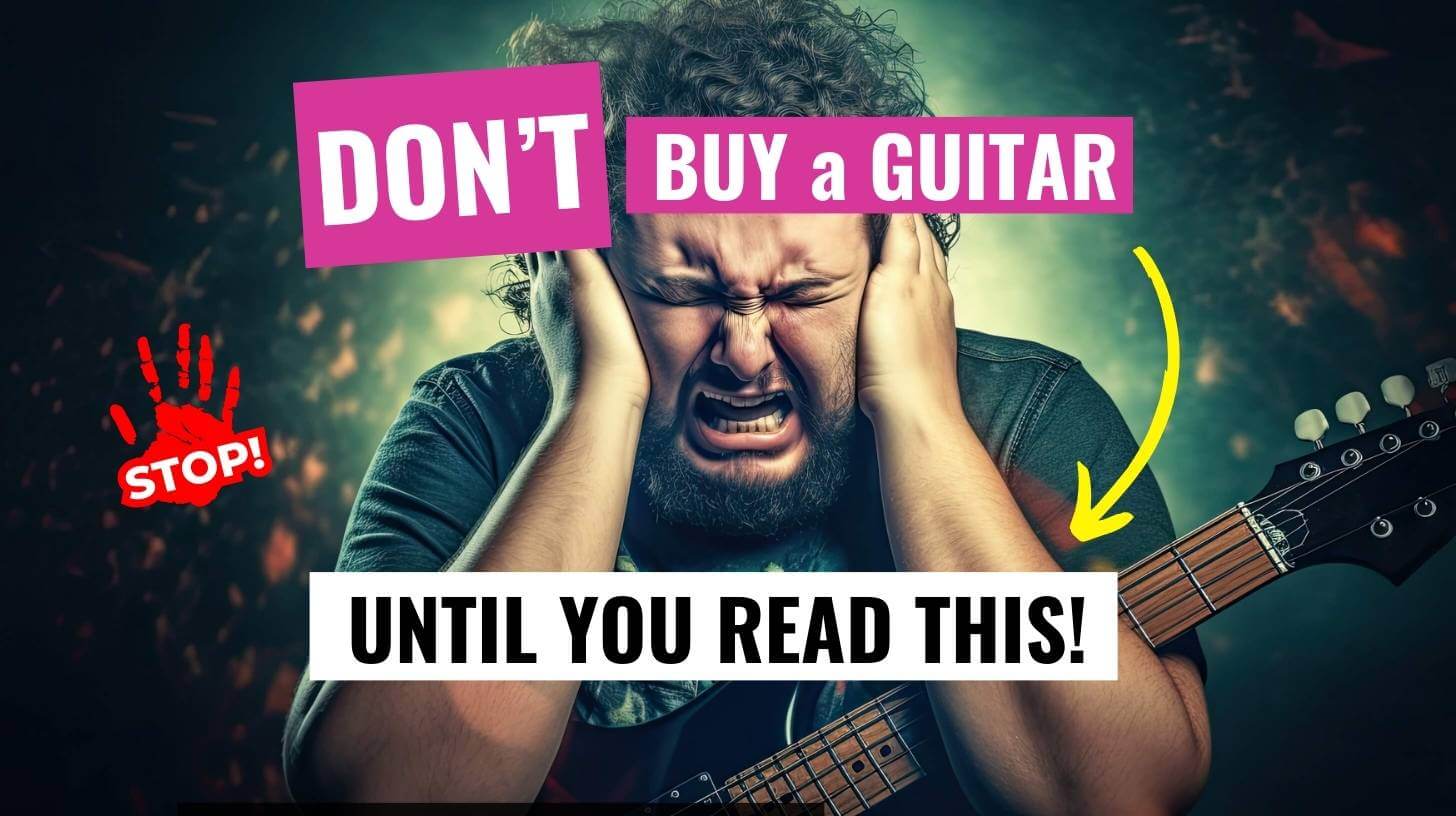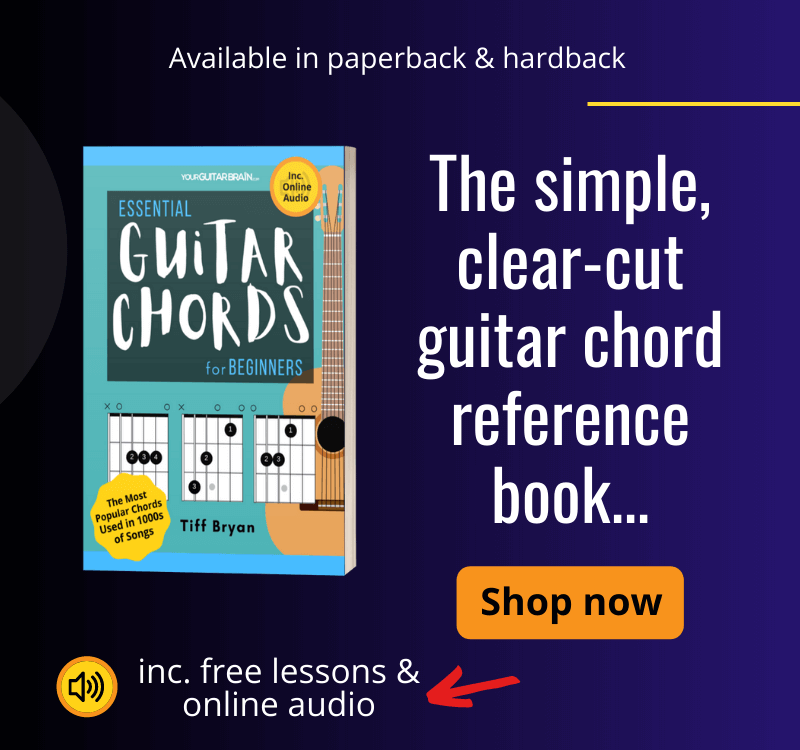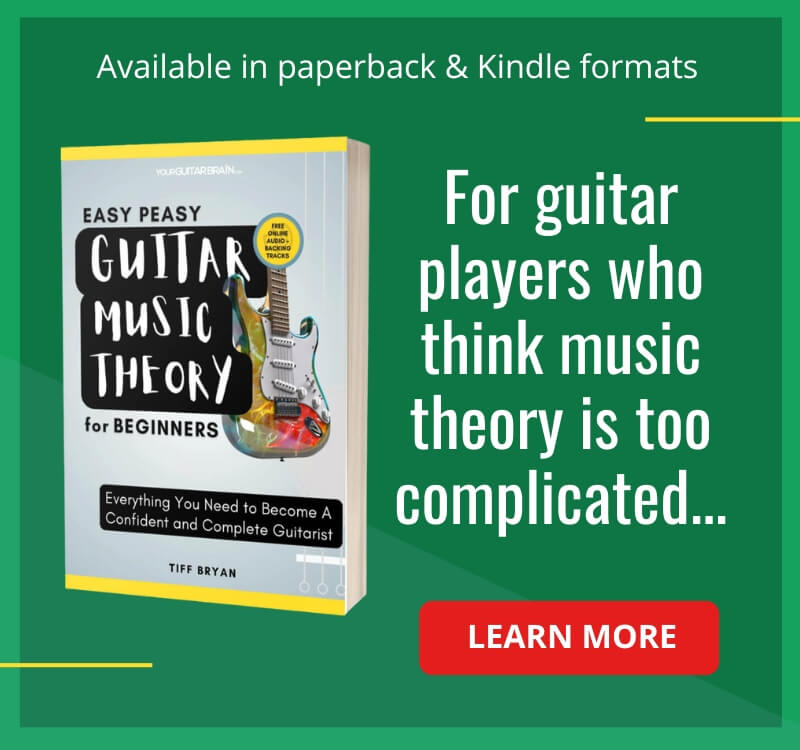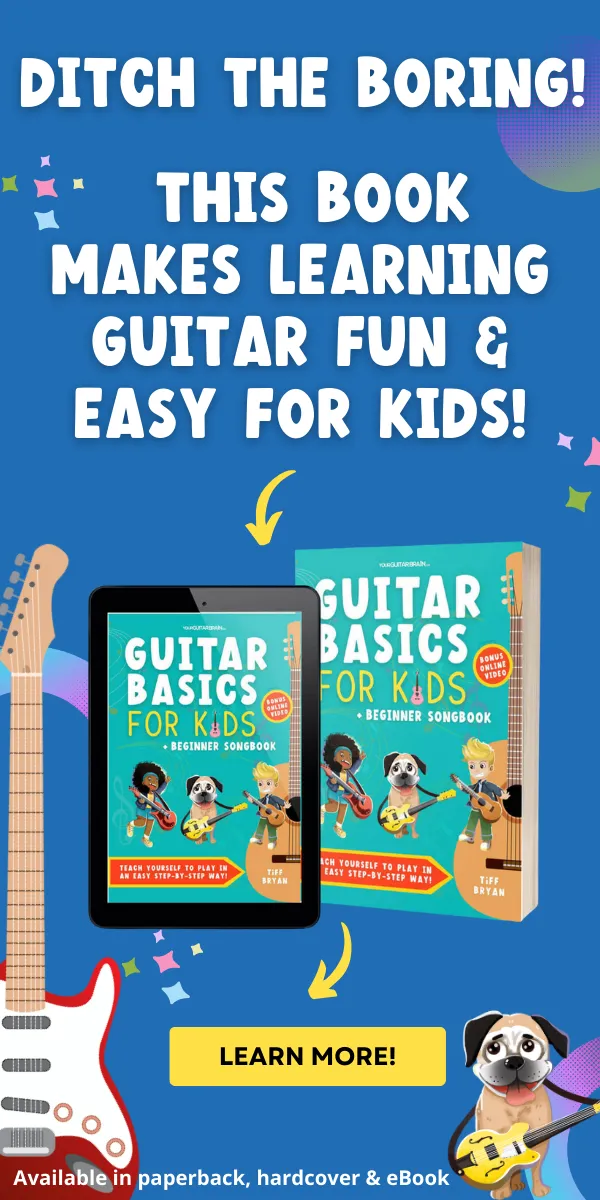The ultimate guitar buying guide for beginners: Learn how to avoid these 11 common mistakes (No. 7 Will SERIOUSLY save you money and regrets!)
As a beginner guitar player, it’s easy to get caught up in the appearance of a guitar and overlook its sound quality.
Additionally, some beginners may not have a clear plan for learning how to play.
There are several common mistakes to avoid when purchasing your first guitar, which we’ll discuss in this article. Have you already made any of these mistakes?
Read on to find out how to avoid costly blunders!
Mistake No. 1 - Choosing the wrong type (and size) of guitar

Hands down, the most common beginner mistake many new guitar players make when buying their first guitar is choosing the wrong type for their needs.
So, just what is the wrong type of guitar anyway?
First and foremost, don’t buy a guitar just based on its looks alone. Sure, it’s super important to love the look of your guitar, but don’t make this the primary reason you buy it.
The thing has to sound and play great first.
Secondly, there’s the guitar body type to consider. What’s the best type of guitar a beginner should buy first?
You need to ask yourself whether you want an acoustic or electric guitar. Electro-acoustic, classical or a small travel-size parlour guitar?
Q. Should I buy an acoustic guitar or an electric guitar?
Our advice is that adult beginners start on a full-sized acoustic guitar. Even if you fancy playing electric guitar, you’ll hone your techniques, build finger strength and improve your overall playing skills when starting off on an acoustic guitar.
Q. What’s the best guitar for kids?
Depending on the size and build of your child, a general rule of thumb is a ½ size guitar is ideal for young children between the ages of 4-8.
Whilst older kids between the ages of 9-13 should start on a ¾ length guitar. Older (or larger) kids and teens are good to go on a full-size guitar.
What are ½ and ¾ length guitars? These are smaller guitars that are suited to smaller bodies and hands.
Q. I have an old classical guitar. Would that be okay for my child to play?
If you’re thinking of getting a guitar for your child, you might be advised to go for a classical one.
But if your child is into other music styles besides classical, it might be better to choose a smaller ¾ guitar, which is also called a travel or parlour guitar.
Classical guitars have wider necks due to their nylon strings, which can be harder for beginners to play.
Moreover, nylon strings might not match the sound of the current pop music that most children want to learn.
The Solution:
Whether buying a guitar for yourself or for a child, get advice from a salesperson in a guitar store.
Don’t just take one person’s word either – try a few different shops, as some sales reps may try to push stock they need to shift on you.
YouTube also has some great guitar reviews where you can hear the guitar being played if you can’t get to a shop for you to give the once-over.
Pro Tip
When buying a guitar, don't let anyone pressure you into spending more than you can afford. Also, don't feel like you have to buy a pricey 100-watt amp for your new guitar. Take your time.
Further reading: 10 Brilliant Cheap Acoustic Guitars | 10 Brilliant Cheap Electric Guitars
Mistake No. 2 - Not hearing the guitar before you buy it
Absolutely, I understand.
The idea of stepping into a music store as a beginner guitarist and having a cheerful sales representative hand you a guitar, saying, ‘Here, give it a try!’ might send shivers down your spine and make you want to curl up and hide.
However, here’s the thing: the first mistake on this list (choosing the wrong type of guitar) can easily be avoided if you take the ‘try before you buy’ approach.
Doing so lets you know if the guitar feels right in your hands and if its sound resonates with you.
The Solution:
If you’re shopping for a guitar, here are some tips to keep in mind:
- If you’re new to guitar buying, ask to use a private sound room at the music shop to test out the guitar on your own.
- You can also ask the salesperson to play the guitar for you. They’ll likely be happy to demonstrate how it sounds and showcase their skills.
- If you’ve found a great deal on a guitar at an online store, check out YouTube. You can almost always find a video of someone playing the same guitar so you can hear what it sounds like before making a purchase.
Classified ad warning
If you’re considering purchasing a guitar from a classified ad or online marketplace, make sure to meet the seller in person instead of having it shipped.
This way, you can try it out in person and make sure there aren’t any hidden problems like damage or high string action that weren’t mentioned in the ad. It’s always better to be safe than sorry.
Mistake No. 3 - Going for an electro-acoustic guitar
When beginning your guitar journey, it’s easy to make the mistake of paying for fancy features that you won’t actually use.
One common misconception among beginners is that an electro-acoustic guitar is a combination of an electric and acoustic guitar.
However, this is not the case. An electro-acoustic guitar is essentially an acoustic guitar that can be plugged in for live performances or recording in a music studio.
Unless you plan to perform on stage or record your guitar in your home studio setup, you won’t need a guitar with advanced electronics.
The Solution:
Instead of opting for an electro-acoustic or electric guitar with extra features, consider going for a standard acoustic guitar.
By simplifying the learning process, you get more value for your money without paying for unused features like electronic pickups.
Mistake No. 4 - Buying a very expensive guitar
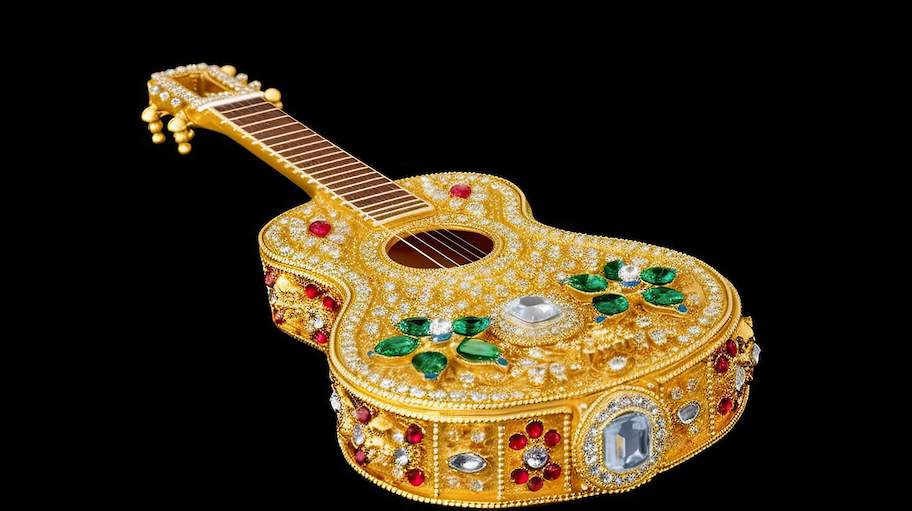
Let’s get straight to it: don’t rush into buying a guitar that’s way beyond your current skill level.
If you’re starting out, spending big bucks on an expensive high-end guitar might not be the best move because you won’t have anything to compare it to.
For instance, the acoustic guitar I began with wasn’t anything remarkable. It wasn’t overly fancy, but it wasn’t dirt cheap either.
This pushed me to work hard and reach a certain level of proficiency before I even thought about upgrading to a pricier guitar.
Turned out that was a wise choice. It helped me truly appreciate the superior sound and playability of the more expensive guitar when I eventually made the switch.
Plus, I realised how much I had improved as a player.
The Solution:
As a beginner, consider getting a decent entry-level guitar that doesn’t drain your wallet. However, I’m not entirely against the idea of buying a more expensive first guitar if you see it as an investment in yourself and a commitment from the get-go.
In the end, always remember that an expensive guitar won’t automatically make you a great player.
It’s the practice that counts. So, if you’re thinking about an electric guitar, ask yourself:
Do you really need a Gibson Les Paul Custom when you can’t even play ‘Smoke On The Water’ yet? That might be a bit overkill.
Mistake No. 5 - Not buying a decent guitar
What’s potentially more damaging than a beginner guitarist buying an expensive branded guitar for their first guitar? A beginner guitarist buying a piece of cheap junk for their first guitar.
Whilst we all love saving money, when it comes to buying your starter guitar, don’t be a penny pincher.
You see, the deal is, it’s all well and good if you find an amazing bargain on a second-hand guitar where you paid 60% less than what it originally cost, but generally with guitars – buy cheap, buy twice.
A general guide on a new guitar price is anything retailing under $150; you’re on risky ground. $250-$500, and you’ll find plenty of great entry-level guitars that’ll last you years.
Price is forgotten long after quality is remembered.
If you’re considering a cheaper guitar, you might end up needing to replace it sooner than you’d like. This is because those guitars can be tough to play and are often made with lower-quality materials, which can result in a less satisfying sound and feel.
Additionally, if you choose a guitar with less expensive machine heads, you’ll have to tune it more frequently.
And if you go for an electric guitar with cheaper electronics, you might find yourself struggling to get the volume right, which can be frustrating.
The Solution:
If you haven’t got enough money to put a decent amount into your first guitar, wait a little longer and save up.
Remember to get advice and guidance from either a music store sales rep or a trusted reviewer online who hasn’t got an ulterior motive to recommend a specific brand of guitar.
➡️ Speaking of, check out our guide showing you the best cheap acoustic guitars here, and the best cheap electric guitars here. All the guitars on our list don’t cost the earth and still sound great.
Mistake No. 6 - Choosing the wrong type of amp for your needs
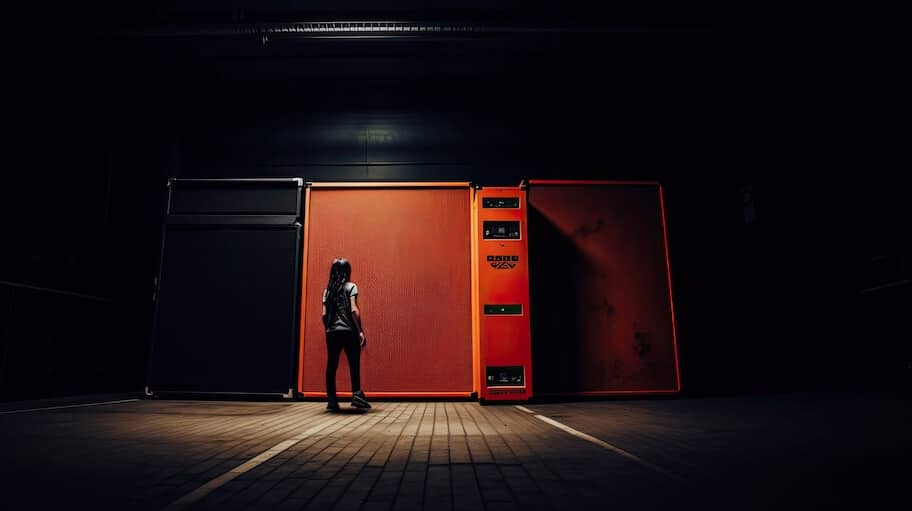
When it comes to your first amp, bigger is definitely not better. Many beginner guitar players think squeezing a Marshall stack into the corner of their front room is a smart move… it’s not.
You might have read your favourite rock or metal guitarists love a Marshall JCM 800 Stack. Do yourself (and your neighbours) a favour, though – don’t copy them just yet. Getting a huge, loud amp as a beginner is plain unnecessary.
The Solution:
There are lots of amazing-sounding small practice amps perfect for home use and even small gigs you should buy as your first guitar amp. Check out our review of the best guitar amps for home use here, in fact.
When it comes to picking an amplifier for your guitar, some people might suggest getting one that matches the type of music you want to play.
But don’t forget that there are certain fundamental skills and techniques that every musician should focus on, no matter what kind of music they’re into. So keep that in mind when you’re making your decision.
Further reading: Best Mini Portable Guitar Amps | 5 Best Guitar Amps For Home Use & Small Gigs
Mistake No. 7 - Not changing your strings
Yes, the strings your brand spanking new guitar came with won’t be brand spanking new for long. Your guitar strings need regular changing.
Some beginners don’t know you have to make a habit of changing guitar strings because old strings break easier more than new strings.
They also sound dull and feel tough on your fingers to play, thanks to the build-up of muck and rust.
Wondering how often you need to change your guitar strings? Check out our in-depth when to change your guitar strings article here that goes into the facts to help answer that question for you.
The Solution: The three-month rule
As a rough general rule of thumb for now, you should change your guitar strings no less than three times a year.
Other variables will change this recommendation, so be sure to pop over to that string-changing article once you’re done reading here.
Pro Tip
Stop using cheap guitar strings! Coated strings last months longer.
Mistake No. 8 - Not tuning your guitar regularly
An out of tune guitar stinks. You need to get into the habit of checking the tuning on your guitar every time you play the thing.
As a beginner, you want to know if you’re playing the notes and chords correctly. If your guitar is always out of tune, you’ll never know.
Keeping your guitar in tune is essential for all guitar players before playing.
Tuning your guitar is easy with an electronic tuner. You can also practice tuning by ear and double-check with the tuner.
The Solution:
You don’t have to be Einstein to work this one out – yes, you’ve got it – make sure you tune your guitar every time you play. You’ll gradually improve your ear training and learn to recognise when your guitar is out of tune.
Mistake No. 9 - Not maintaining your guitar properly
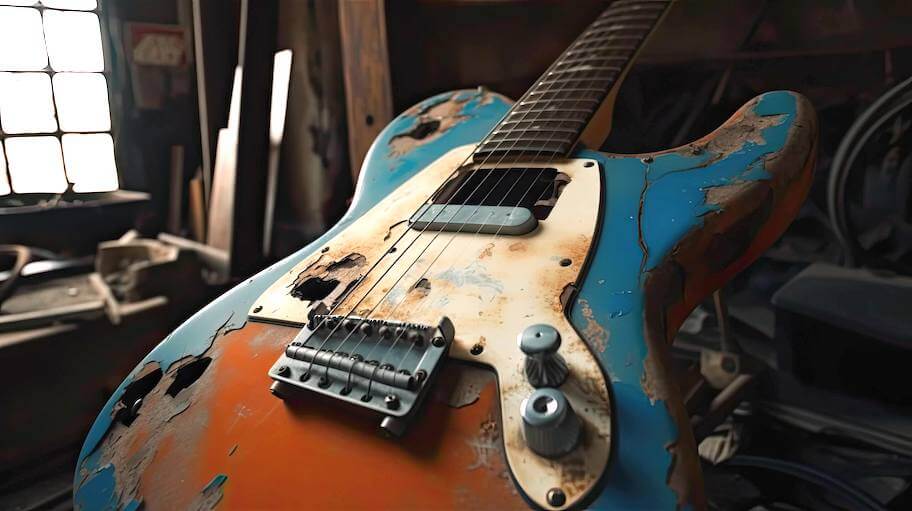
A clean guitar is a happy guitar.
You can save yourself money and prolong the life of your strings, for example, by cleaning them and your guitar neck regularly.
Get yourself a good guitar maintenance cleaning kit (which will last you for years), and never use household cleaners on your guitar.
You’ll find many sorrowful stories from newbie guitar players who have paid the price for thinking it’s okay to smear their guitar with Windex in the hope of bringing out a shine. All that’ll do is damage the natural finish on the guitar.
Ouch.
So be mindful to clean your guitar with specific guitar cleaning products only.
The Solution:
Follow these top five guitar maintenance tips:
- Clean your guitar body and fretboard to keep it fresh and prolong its life (see best guitar cleaner recommendations below).
- Always wash your hands before playing your guitar to prevent the oils and grime on your hands from building up on the strings.
- Make sure to restring your guitar every 3-5 months and wipe down the fretboard during the string change. Choose quality coated guitar strings for longer use.
- Never leave your guitar in an excessively humid environment (either too dry or too wet). Consider getting a guitar humidity control accessory.
- Get your guitar set up properly and serviced by a pro guitar luthier or guitar technician.
➡️ Best Guitar Cleaning Kits & Tools
These best guitar cleaning and maintenance products are a must to help keep your instrument in mint condition!
Jim Dunlop Guitar Cleaning Kit Check it out >>
Ernie Ball Musician’s Tool Kit Check it out >>
Jim Dunlop SYSTEM 65 Complete Tech Check it out >>
D’Addario Humiditrak Bundle Humidikit Check it out >>
Music Room Humidifier Check it out >>
ROADIE 3 Auto Guitar Tuner Winder Check it out >>
Guitar Neck Rest Check it out >>
Mistake No. 10 - Not having guitar lessons
Fail to prepare, prepare to fail...
The 10th mistake on our list is one that can seriously hinder beginners. It’s not just about buying your first guitar; it’s also about knowing the best way to learn to play it effectively.
Don’t fall into the trap of thinking you can go it alone without seeking any guidance or instruction.
Did you know that a whopping 90% of beginner guitarists give up within a year of getting their first guitar? You can avoid this discouraging statistic by investing in guitar lessons. Lessons will keep you motivated, focused, and on the path to progress.
A good teacher will provide you with a clear action plan and help you acquire the right techniques and skills to excel at playing the guitar.
While in-person, one-on-one lessons are always our top recommendation for beginners and players at all levels who want to improve, we understand that finding great tutors can be challenging in some areas.
➡️ If you want to learn guitar from the comfort of your home, we suggest trying out three great online lesson platforms: JamPlay, TrueFire and Pickup Music. And of course, don’t forget to explore our own tutorials and tips here at YourGuitarBrain!
Both platforms offer a wealth of features that will accelerate your guitar playing journey far beyond what you can achieve on your own
➡️ Best Guitar Lessons & Online Music Courses
Discover the best online guitar tutorial apps and music courses for beginners upwards to fast-track your musical gains!
JamPlay Check it out >>
TrueFire Check it out >>
Pickup Music Check it out >>
Coursera Check it out >>
Mistake No. 11 – Buying a guitar without essential accessories
As a newbie guitarist, it’s understandable to think that buying your first guitar is all you need.
But I’m here to tell you that there are some essential accessories that every new guitar player needs to purchase at the same time as their first guitar.
The right accessories can make your practice sessions more enjoyable and productive.
Solution:
What guitar accessories do you need? The top 6 guitar accessories that every guitar player needs are:
With so many options to choose from, we’ve simplified your decision-making process by putting together a list of the best guitar accessories for you to browse:
Further Reading: Top 15 Must-Have Guitar Accessories Gifts (for Beginners Upwards)
- Guitar tuner: A guitar tuner is essential for keeping your guitar in tune, which is crucial for sounding good. There are many different types of tuners available, from clip-on tuners to super cool automatic tuners for those who love gadgets.
- Spare strings: Guitar strings break regularly, so having a spare set on hand is important. When choosing spare strings, be sure to get good quality coated strings that last ages longer than cheap non-coated ones.
- Guitar picks: Guitar picks (aka plectrums) come in a variety of shapes, sizes, and thicknesses. Medium-thickness picks are a good choice.
- Guitar stand: A guitar stand is a great way to keep your guitar safe and secure when you’re not playing it. It also makes it easy to grab your guitar and start playing whenever you’re in the mood.
- Footstool: A footstool can help you maintain good posture while you’re playing the guitar. Guitar footstools can also help you avoid a sore neck and back. They’re Pretty handy!
- Guitar case: A guitar case is essential for protecting your precious new guitar from damage when you’re transporting or storing it.
With so many options to choose from, we’ve simplified your decision-making process by putting together a list of the best guitar accessories for you to browse:
Further Reading: Top 15 Must-Have Guitar Accessories Gifts (for Beginners Upwards)
BONUS:
Top beginner guitar player mistake to avoid going forward.
Mistake No. 12 – Shiny new object Syndrome
So, you’ve bought your new guitar, and it’s been three months into your learning journey. During your lunch break, you stumbled across a YouTube video showcasing the amazing qualities of a particular guitar brand.
Before you know it, hours of research have passed, and armed with knowledge about how a spruce top and rosewood fretboard can enhance your playing experience, you find yourself sheepishly purchasing guitar number two.
New things are undeniably enticing, and no one will argue against that.
However, do not fall into the trap of thinking that amassing a large collection of guitars (which will likely end up gathering dust) will make you a better player.
In other words, focus on mastering your first guitar to a high level before indulging in another purchase down the line. This approach is not only sensible but also less expensive.
Ultimately, the choice is yours!
Summing it up
Buying your first guitar is an exciting experience. It’s the start of a lifelong journey of music and creativity. But with so many different guitars and accessories available, it can also be daunting.
Remember, the most important thing is to find a guitar that you love, and that inspires you to play.
With the right guitar and accessories, you’ll be well on your way to becoming a great guitar player.
Take care y’alls.

